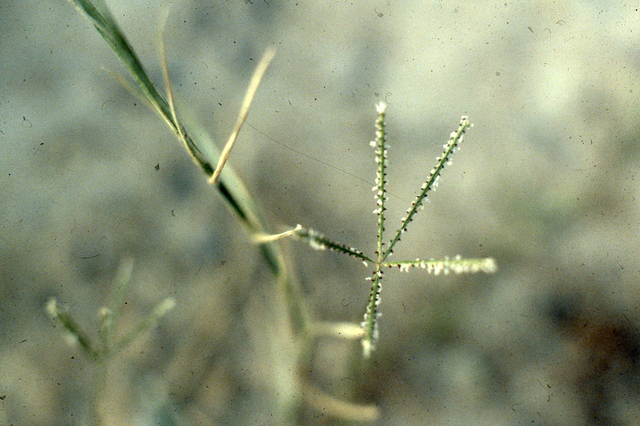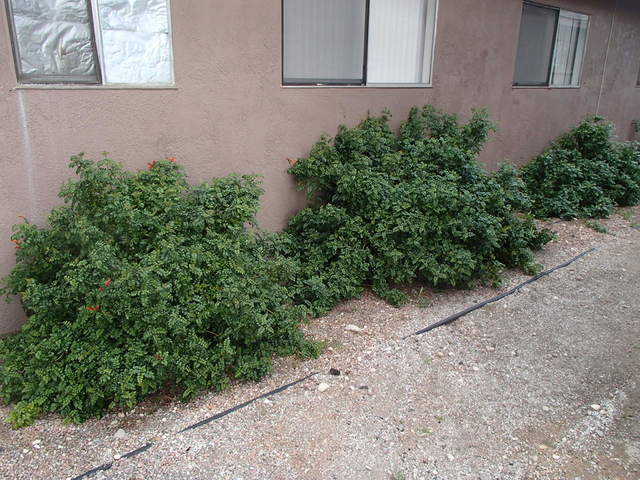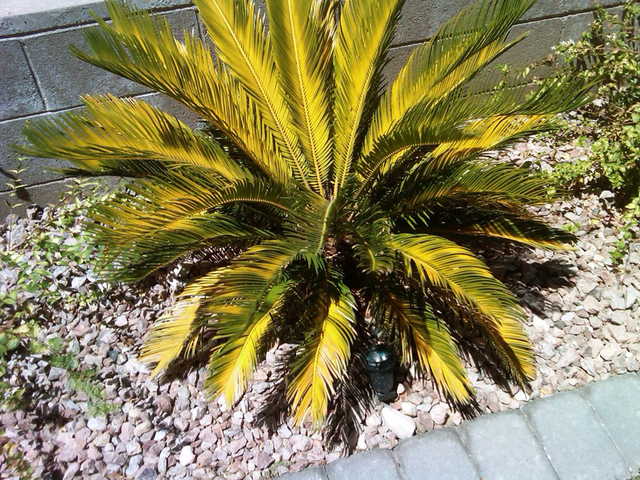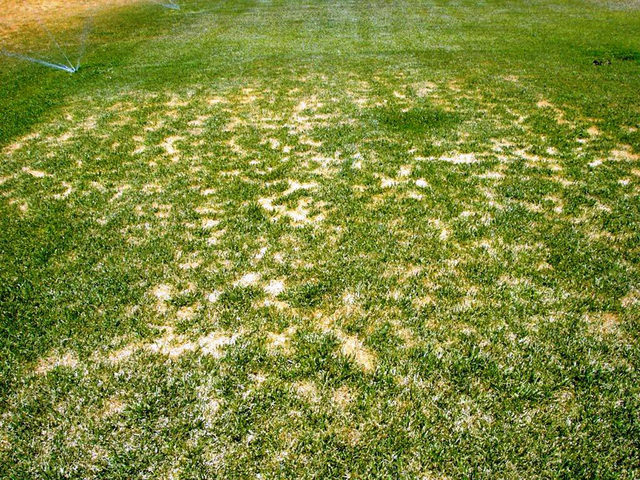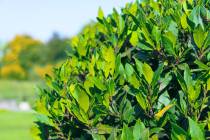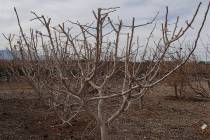Lawns shouldn’t be watered at night during hot months
Hot weather favors lawn diseases common here. Now is an optimum time for controlling lawn diseases before they in get into full swing. If your lawn had disease in the past, now is a good time to apply a fungicide. Fungicides are primarily preventive and work best when they are applied before the disease rears its ugly head.
Prevention also aims at keeping the lawn dry when it gets dark. The lawn should go to bed at night. Water early in the morning and finish just before sunrise.
Q: Should I fertilize my plants during the summer? I have a fertilizer schedule of every two weeks with a fertilizer I spray on the plants with a hose. I do this early morning, approximately 6 a.m.
A: Fertilizers can be applied during the summer months if you are careful and apply it to plants that need it. The plants that need fertilizers often are bedding plants, woody flowering plants like roses and gardenias, lawns and vegetables.
Fertilizing this way early in the morning is smart and reduces the possibility of burning the plants. You should also reduce the amount of fertilizer recommended on the label in half during the heat of the summer.
Most trees and shrubs, including fruit trees, do not need applications of fertilizer more than twice a year if the fertilizer is applied to the soil. If a fertilizer is applied to the leaves of trees and shrubs, then applications should be more frequent.
It sounds like you are fertilizing with a hose-end sprayer or fertilizing your plants by applying a liquid fertilizer to the leaves rather than to the soil. When you do this, you are giving the plants small amounts of fertilizer but applying it more often. Actually, this is how the plant would use the fertilizer best.
Soil-applied fertilizers feed the plant longer than fertilizers applied to the leaves because it lays in reserve in the soil. Soil-applied fertilizers are applied once or twice during the growing season, and that is adequate. Plants that flower continuously through the growing season require fertilizer applied more often.
Slow-release, soil-applied fertilizers release fertilizer slowly and are more similar to liquid fertilizers applied to the leaves. They cost more initially but require less effort on your part.
One advantage of feeding plants through their leaves is that the fertilizer gets into the plant within a few hours after it is applied, but it is short-lived, perhaps lasting three to four weeks during periods of rapid growth.
Q: This is the third season we have had our cape honeysuckle vines. We always had a profusion of flowers. However, after this winter, we have no orange flowers. Is there anything we can do to get these to flower? We miss the hummingbirds.
A: Reduce of the water and fertilizer until you see flowers. From your description, I am guessing they survived but had some cold damage and dieback. Fertilize the plant to help its recovery.
The size of the roots is not in balance with the top, now much smaller in size. The plant, sensing this, sends more energy and signals to put on new leaves and stems at the expense of flowers. It will begin flowering when the roots and top get back into closer balance.
If fertilizer is applied, particularly nitrogen fertilizer, it will encourage leaf and stem growth at the expense of flowering. It will flower again as soon as the top growth re-establishes itself in relation to the old roots.
The plant does not need your help to get it flowering again, but I am sure it appreciates your concern.
Q: Are there any Bermuda grasses that can be started from seed suitable for a home lawn?
A: There are a couple of so-called hybrid Bermuda grass available that can be started from seed. They have performed well here in Las Vegas. We have used them on our research plots over the last six years and were very satisfied.
The reason we can no longer use common Bermuda grass in Las Vegas (the usual kind started from seed) is because of the pollen and allergy problems that can occur when its growth is uncontrolled.
Hybrid Bermuda produces very little living pollen and doesn’t bother allergy sufferers. For this reason, hybrid Bermuda produces almost no seed.
True hybrid Bermuda must be started from sod, plugs or its stems and rhizomes (called stolons). If a hybrid Bermuda grass can be started from seed, then it also must produce quite a bit of pollen.
Does this pollen also affect allergy sufferers? Yes. To be on the safe side, stick with the Bermuda grass that must be started from sod, plugs or stolons. Not seed.
Q: My sago palm or cycad has yellow leaves. What could be the problem?
A: The usual reasons for yellowing are planting in locations with too much direct sun, overwatering or poor drainage.
They are tough plants. The sago palm, also called cycad, is a bit out of place in the desert. However, they will grow very well here if we are careful where they are planted, how they are planted and how they are maintained.
They shouldn’t be planted in full shade, and they shouldn’t be planted in hot locations in full sun. They prefer light shade or a few hours of direct sunlight in the morning or early afternoon.
Avoid direct, late afternoon sun next to hot walls. When they are planted, amend the soil heavily with organic matter, particularly those amendments that produce acid such as peat moss or homemade, well-rotted compost if you have it.
Use sulfur in the backfill along with a good starter fertilizer. Make sure that the irrigation system is watering the entire root zone when it is operating and that the planting hole is draining. It should be on an irrigation valve that is watering other plants that need frequent irrigations other than the lawn.
Cycads do well in flower beds. Do not water from overhead if at all possible or, at least, do it infrequently.
Q: I planted cacti one month ago. How often do I water?
A: I wasn’t told if this was indoors or outdoors, but we’ll assume it was outdoors. During establishment, I wouldn’t water over once per week in midsummer in sandy soils.
They must have good drainage. Make sure that water drains freely from the roots of these plants. Many cacti are opportunists when it comes to water. When they have water, they take full advantage of it. When they don’t have it, they shut down.
To give one watering schedule for all cacti will offend many of the cacti lovers. To be fair, you should become familiar with these different plants and adapt your watering for each.
Cacti tend to have shallow roots that extend long distances from the mother plant.
If you want cacti to grow, then water them every three to four weeks during the summer. If you want them to stay smaller, water them less often than this, but watch their growth. If you water them too often, it is possible they could get root rot or, if they are tall, fall over.
These are plants that do not need to be on an irrigation system and are perfect for occasional waterings with a hose.
— Bob Morris is a horticulture expert living in Las Vegas and professor emeritus for the University of Nevada. Visit his blog at xtremehorticulture.blogspot.com. Send questions to Extremehort@aol.com.



